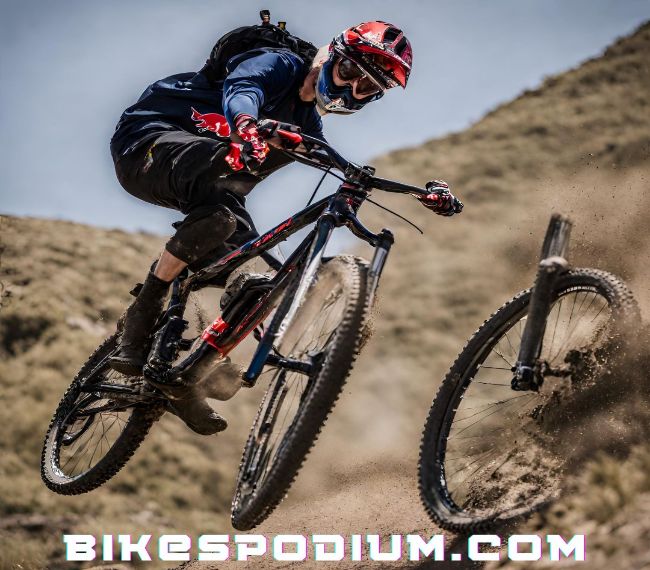When it comes to mountain biking, choosing between a hardtail and a full suspension mountain bike is a crucial decision for riders. Each option has its own unique advantages and disadvantages. Understanding the differences between them can help you make an informed decision based on your riding style, preferences, and the type of terrain you plan to conquer. In this article, we will delve into the characteristics, pros, and cons of both hardtail and full suspension mountain bikes, allowing you to choose the best option for your mountain biking adventures.
Hardtail Mountain Bikes
1. Lightweight and Efficient
Hardtail mountain bikes tend to be lighter than their full suspension counterparts due to the absence of a rear suspension system. This lightweight nature makes hardtails more efficient when it comes to climbing and smooth terrains. Riders who prioritize speed and efficiency often lean towards hardtails for their ability to transfer power directly to the ground.
2. Lower Maintenance and Cost
With fewer moving parts, hardtail mountain bikes are generally easier to maintain and have lower maintenance costs compared to full suspension bikes. The absence of a rear shock reduces the complexity of the bike and eliminates the need for regular maintenance and servicing of the rear suspension components. Additionally, hardtails are often more affordable than full suspension bikes, making them a popular choice for budget-conscious riders.
3. Enhanced Pedaling Efficiency
As hardtails lack rear suspension, they provide a more direct connection between the rider’s pedaling power and the ground. This increased pedaling efficiency allows riders to transfer more energy into forward motion, resulting in a faster and more responsive ride. Hardtails excel in races and trails with smooth surfaces where maintaining momentum is crucial.
4. Better Climbing Ability
Due to their lightweight and efficient design, hardtail mountain bikes excel in climbing steep terrains. The absence of rear suspension minimizes energy loss, allowing riders to efficiently tackle uphill trails. The rigid rear end provides more traction, making it easier to maintain control and power through challenging ascents.
5. Improved Skill Development
Riding a hardtail mountain bike requires more skill and finesse compared to a full suspension bike. With the rear wheel lacking suspension, riders must rely on proper technique and body positioning to absorb impacts and maintain control. As a result, riding a hardtail can help improve your overall riding skills and make you a more versatile mountain biker.
Full Suspension Mountain Bikes
1. Enhanced Comfort and Control
The primary advantage of full suspension mountain bikes is their ability to absorb impacts and vibrations. The rear suspension system allows the bike to better handle rough terrains and obstacles, offering a smoother and more comfortable ride. This enhanced comfort translates into reduced fatigue, allowing riders to conquer longer rides and challenging trails with more confidence.
2. Improved Traction and Stability
Full suspension mountain bikes provide better traction and stability, especially on technical and rocky terrains. The rear suspension helps to keep the rear wheel in contact with the ground, enhancing control and reducing the chance of losing traction. This increased stability is particularly beneficial when riding at high speeds or tackling steep descents.
3. Superior Downhill Performance
If you are an adrenaline junkie who enjoys aggressive downhill riding, a full suspension mountain bike is your best bet. The combination of front and rear suspension systems absorbs shocks and impacts more effectively, allowing riders to maintain control and stability even on the most challenging descents. Full suspension bikes excel in providing a smooth ride and reducing the risk of fatigue-induced mistakes.
4. Versatile on Various Terrains
Full suspension mountain bikes are versatile machines that can handle a wide range of terrains. Whether you are riding on rough trails, tackling technical descents, or exploring all-day epic adventures, a full suspension bike will provide the necessary comfort and control. These bikes are designed to tackle any obstacle that comes your way, making them a go-to choice for riders seeking versatility and adaptability.
5. Better Handling in Technical Sections
When it comes to maneuverability and handling, full suspension mountain bikes have the upper hand. The combination of front and rear suspension systems provides improved balance and control, making it easier to navigate through technical sections, tight corners, and challenging obstacles. Full suspension bikes allow riders to take on more aggressive lines and push their limits in technical terrain.
Conclusion
the choice between a hardtail and a full suspension mountain bike ultimately depends on your riding style, preferences, and the terrain you plan to ride on. Hardtails offer lightweight efficiency, better climbing ability, and skill development, making them ideal for cross-country riders and smooth trails. On the other hand, full suspension bikes provide enhanced comfort, traction, and control, making them suitable for aggressive downhill riding and tackling rough terrains. Assess your riding needs and prioritize the features that are most important to you, and you will be able to make an informed decision that enhances your mountain biking experience. Happy trails!
FAQ
1. What are the advantages of choosing a hardtail mountain bike?
- Hardtail mountain bikes are lightweight and efficient, making them great for climbing and smooth terrains.
- They have lower maintenance costs and are generally more affordable than full suspension bikes.
- Hardtails provide enhanced pedaling efficiency, allowing riders to transfer more energy into forward motion.
- They excel in climbing steep terrains due to their lightweight and efficient design.
2. What are the benefits of choosing a full suspension mountain bike?
- Full suspension mountain bikes offer enhanced comfort and control, as they can absorb impacts and vibrations.
- They provide better traction and stability, especially on technical and rocky terrains.
- Full suspension bikes excel in aggressive downhill riding, providing superior performance and reducing the risk of mistakes.
- They are versatile and can handle a wide range of terrains, making them suitable for various riding styles.
3. Which type of mountain bike is better for skill development?
- Riding a hardtail mountain bike requires more skill and finesse, as riders must rely on proper technique and body positioning to absorb impacts and maintain control.
- Therefore, choosing a hardtail can help improve overall riding skills and make you a more versatile mountain biker.
4. What are the advantages of full suspension mountain bikes in technical sections?
- Full suspension mountain bikes have the upper hand in maneuverability and handling.
- The combination of front and rear suspension systems provides improved balance and control, making it easier to navigate through technical sections, tight corners, and challenging obstacles.





